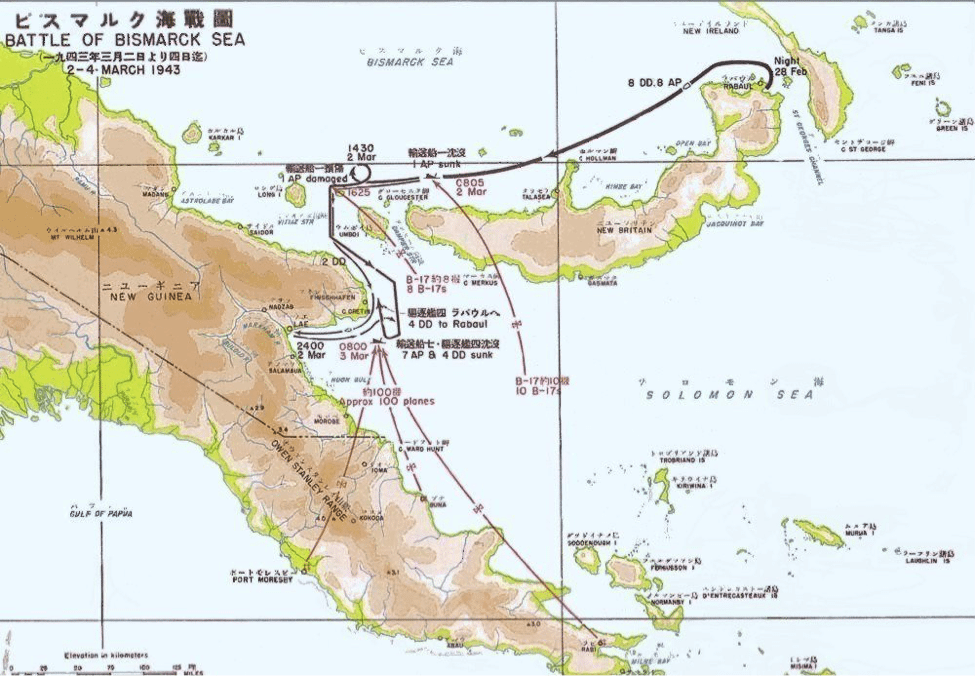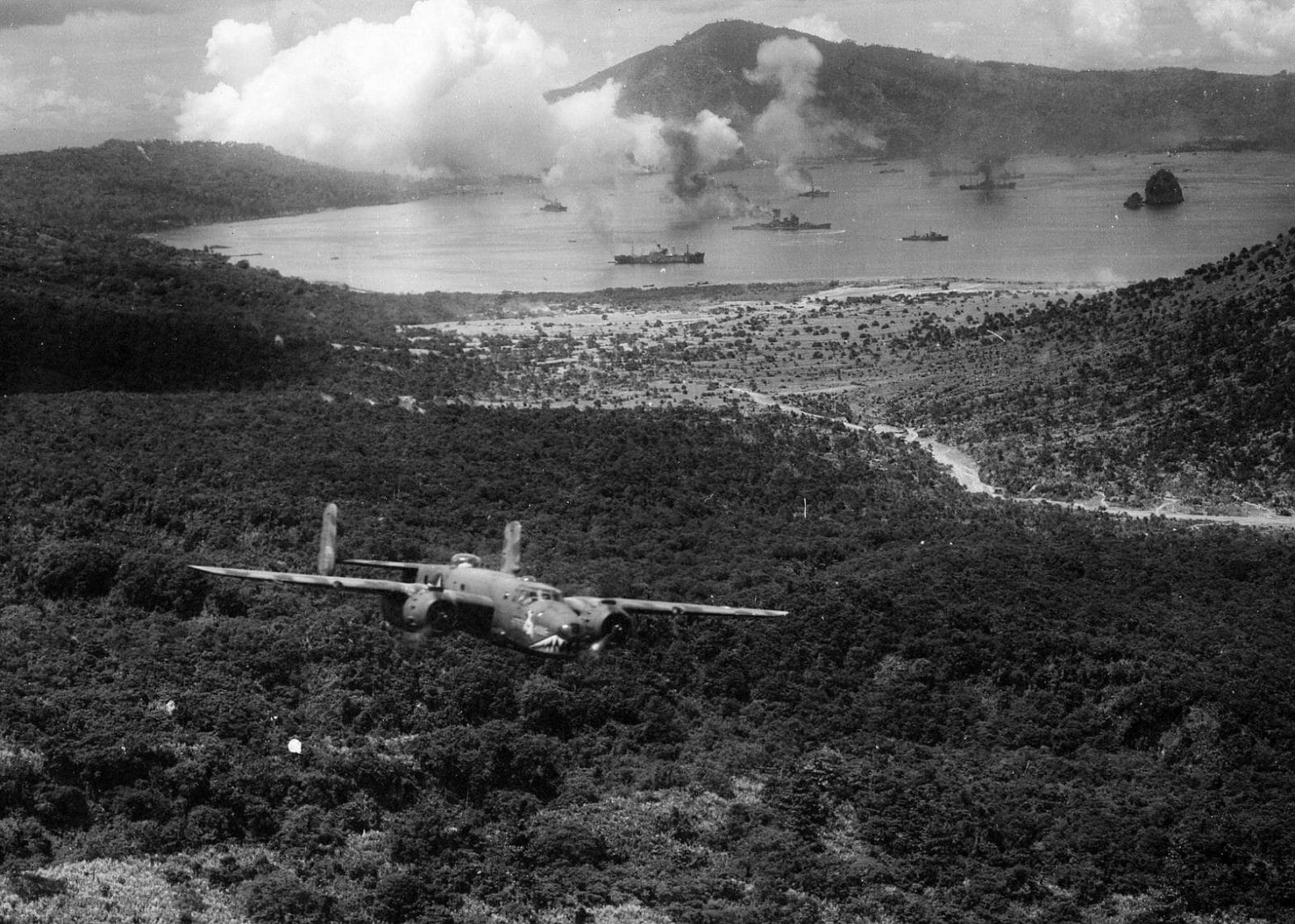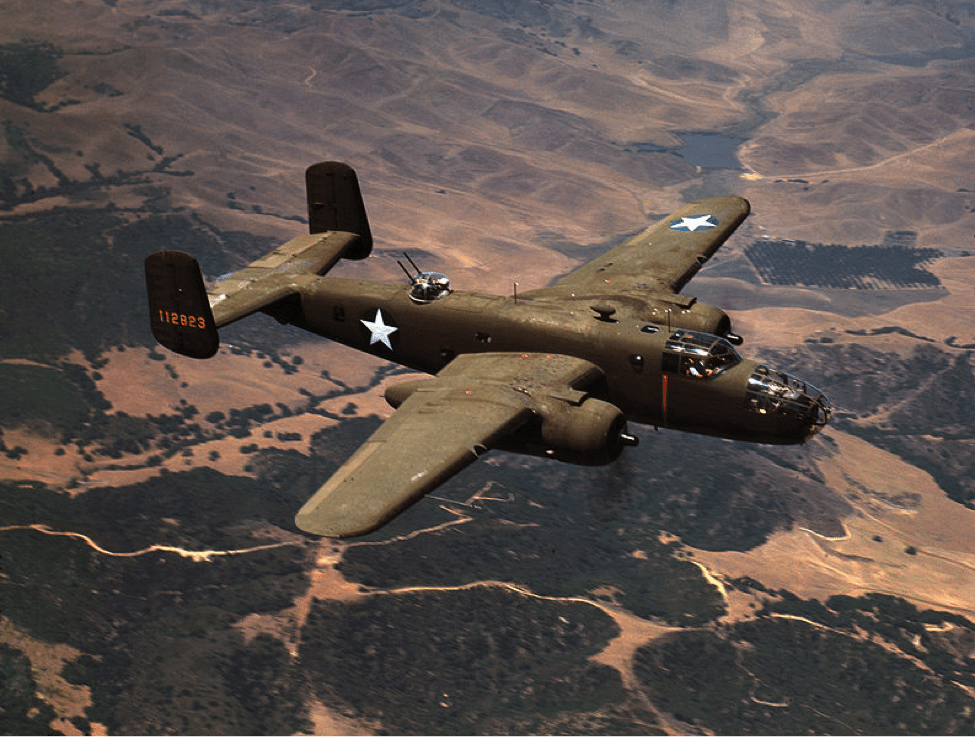Using More Than a Dozen Different Aircraft the Aussies and the Yanks Combined for a Near-Total Victory
Beginning on 2 March 1943 and lasting over the next two days, a battle was fought that determined the fate of the Japanese forces engaged against Allied armies on New Guinea. This battle, later known as the Battle of the Bismarck Sea, was not fought between battleships. It was not a night surface action or a destroyer duel. The all-important aircraft carriers were not involved. No Wildcats, Corsairs, Dauntlesses, or Avengers did battle with the Japanese Kates, Vals, or Zeros. Yet, it was such a complete victory for the Allied air forces in the area that the newly-developed and highly effective weapons and tactics used to defeat the Japanese were utilized by the Allies for the rest of the war.

Desperately Needed Troops and Supplies Put in Harm’s Way
The Battle of the Bismarck Sea pitted a Japanese convoy carrying urgently needed reinforcing troops and supplies from their bastion of Rabaul on New Britain to Lae on neighboring New Guinea against fighters and bombers of the US Army Air Corps (USAAC) and Royal Australian Air Force (RAAF). Except for a night attack by US Navy PT boats this battle was fought entirely by ships against land-based aircraft.

Success is Where You Find it
The Japanese had successfully landed troops and supplies at Lae before. Even though the Allies were able to decode Japanese radio traffic about a convoy planning to head from Rabaul to New Guinea in January, the attacking USAAC and RAAF aircraft were unable stop it. The convoy, consisting of five transports with five escorting destroyers, succeeded in landing most of their embarked troops and supplies even though the Japanese lost one transport (Nichiryu Maru) and had to beach another one (Myoko Maru) that was heavily damaged.

The Snooper Tipped Off the Allies
After a Japanese floatplane type often used for anti-submarine patrols in advance of convoys was sighted on 7 February 1943, General George Kenney (Allied Air Commander- Southwest Pacific) ordered increased aerial reconnaissance coverage of Rabaul believing something was cooking there. A week later there were 79 vessels in port, making it clear that another convoy, destination unknown but inferred, was forming up.

Code Breakers Reading the Mail
Once naval code breakers were able to decrypt a coded message outlining the Japanese plans for the convoy the American and Australian commanders agreed to hit the convoy in the Vitiaz Strait between the islands of New Guinea and New Britain. This convoy would consist of eight military transport ships with eight escorting destroyers along with air cover consisting of about 100 Japanese fighter aircraft.

It’s a Lot Harder Than It Looks
Hitting a maneuvering ship with a dropped bomb from any altitude is a dicey proposition at best. Up to that point 416 sorties had been flown against Japanese convoys in the New Guinea campaign resulting in only two ships sunk and three damaged. After conferring with experienced RAAF and USAAC pilots, the Allies decided to try bombing from different directions and altitudes simultaneously. Attacks by high altitude bombers would, it was hoped, disperse the convoy and allow more accurate bombing from medium altitude…and low altitude.

